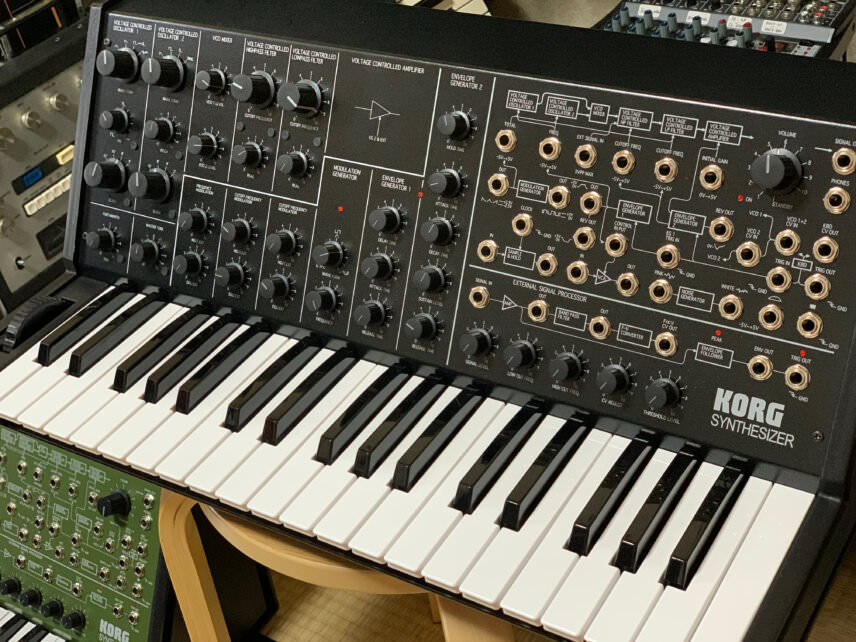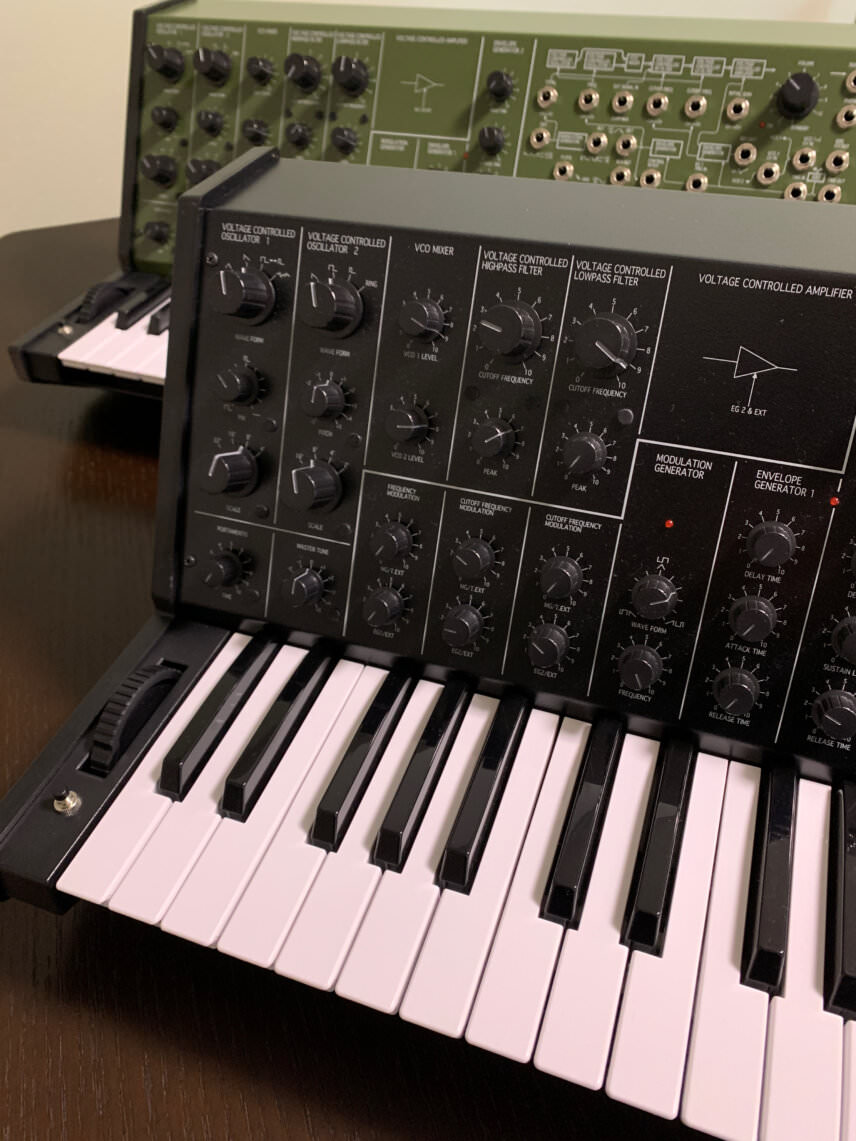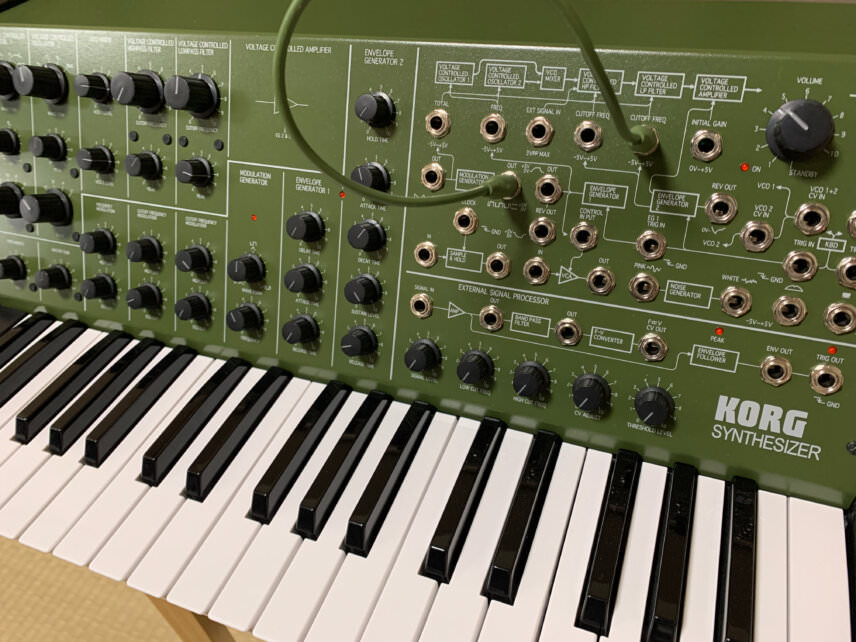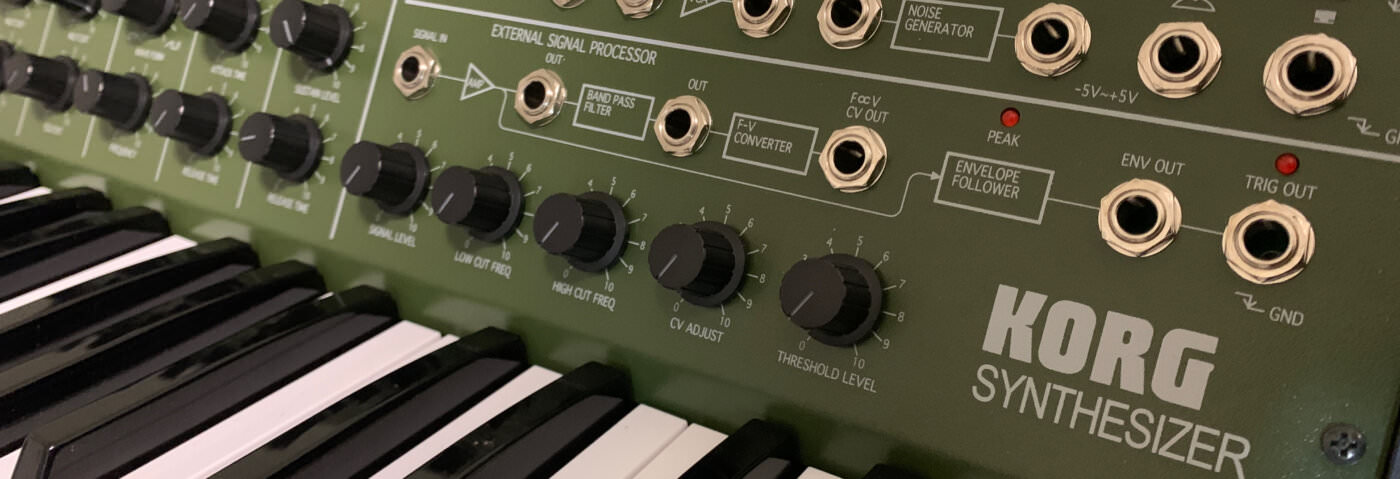Korg finally release the full-size version of their classic monosynth, the MS-20. Can it still hold its own amidst the clones and competition?
Korg’s MS-20, a semi-modular dual-oscillator monosynth, was released in 1978 and was only in production for five years. The instrument, which has been used by everyone from Hardfloor and Aphex Twin, to Air and Stereolab, and on to Front 242 and Skinny Puppy, was Korg’s first big breakthrough after a number of more esoteric synthesizers. Popular at the time, it has only gained in notoriety throughout the decades for its aggressive sound and downright nuts filter.
Even if that were the end of the story, it would be a pretty interesting one. But it’s not, not by a long shot. In 2013, Korg made the unprecedented move of re-releasing one of its own instruments. Dubbed the MS-20 Mini, it was an 86% sized reproduction of the original, albeit with minijacks and mini-keys. It, in turn, was extremely popular and helped kick off not only the analogue synth craze of the 2010s but also the re-release and clone trend that continues unabated to this day. The Mini was soon joined by the MS-20 Kit in 2014 and the keyboardless MS-20M kit in 2015. Now, in 2020, we finally get an official re-release of the original bad boy himself.
What’s New
Dubbed the MS-20 FS (full size), the new MS-20 is essentially a preassembled version of the 2014 kit, although now available in four different colours: original black, white, blue, and green. We’re particularly fond of the green version, as it looks like a piece of decommissioned military hardware. While previous incarnations came with yellow cables, the FS comes bundled with colour-matched cables—green cables for the green face, blue for the blue, etc. And, although the original MS-20 was released prior to the introduction of MIDI, Korg have helpfully included both a DIN MIDI-in port and USB MIDI.

If you’ve used an MS-20 Mini, you’ll probably know that the build quality on the replica is a little, shall we say, disappointing. The original was built like a proverbial tank, and thankfully the new FS retains that aesthetic. Knobs are solid with a pleasing amount of resistance, the jacks are sturdy, and the keys substantial. The modulation wheels are a little on the wobbly side though.
Analogue Synthesis
Let’s talk sound. The MS-20 FS, like the original, is a two-oscillator monosynth, meaning it’s capable of some chewy, 1970s-style harmonics. Oscillator one has triangle, sawtooth, adjustable pulse, and noise settings, and goes from 2’ down to a gut-rumbling 32’. Oscillator 2 also has sawtooth, two pulse settings (square and a nasal, pinched square), plus ring modulator, with oscillator footage that goes from 2’ to 16’. Oscillator two can be detuned to create some delicious phasing and beating effects.

While the oscillators are lovely, the MS-20 is most famous for its filters, and rightfully so. There’s a 6dB/octave highpass and 12dB/octave lowpass, both resonant and both capable of self-oscillation. The MS-20 actually had two filters in its original run. The first, which was based around the proprietary Korg-35 IC, was a little hissy but this could turn into a scream when pushed into self-oscillation. The later filter used an OTA circuit and has a creamier, less aggressive sound. The HS, like the Kit, includes both filter types, selected by holding down a combination of keys at startup.
Filter one is rough, aggressive and screamy, while filter two is a little more nasal and smooth. While filter two does have its merits, you’re likely to leave it set to filter one, as it’s really the sound the MS-20 is known for.
Semi-Modular Fun
The MS-20 has the usual complement of ’70s synthesis options, such as envelope generator, LFO (adjustable square) and portamento. It’s when you put the extensive patchbay to use though that the synth really comes into its own. Triangle/sawtooth LFO, sample and hold, use of the mod wheel and momentary button, and more are all accessible via the 27 quarter-inch jacks. External audio can also be routed directly into either the highpass or lowpass filter, or both, making it great for processing drums and other synths.

Unique for any synth, classic or modern, is the pitch-tracking section located under the patchbay. Put a signal through it and the MS-20 will find the pitch information and turn it into CV/gate signals. This means you can turn the MS-20 FS into a guitar synthesizer, as Daft Punk were rumoured to have done on ‘Digital Love’. The pitch tracking, it has to be said, is not perfect (this is 1970s technology, after all), but that’s part of its charm.
Compared To The Mini
If you already have an MS-20 Mini do you really need the FS? That depends on how much you love the sound. While they are extremely similar, on close inspection the FS seems to have a more full sound, beefier with more presence and oomph.
As we already mentioned, the build quality is much improved over the Mini as well. We would never gig with a Mini but the FS seems very solid and road-worthy.
Full Size Price
At around £1,150, the MS-20 FS is not what you’d call cheap. The average price of used classic MS-20s is around £1100. However, buying any kind of vintage gear is a commitment, with repairs and maintenance needing to be factored into the cost. The Mini (around £500) is certainly cheaper but has its own drawbacks. In the world of new synths, other similarly priced monosynths include the Moog Grandmother (£825) and the company’s own ARP Odyssey FS, if you can find one on the used market. There’s also the Behringer K-20, which is quite a bit cheaper but lacks a keyboard.
So is it worth it? The MS-20 is a classic and treads into an aggressive territory that most other synthesizers will not. It’s unapologetically punk and, with its patchbay and pitch-tracking capabilities, it’s expansive and inspiring. If you’ve ever wanted a full-size MS-20 but were turned off by buying something 40 years old, the MS-20 FS is perfect for you. The only question now is, what colour will you get?
The Verdict
Price: £1,150
Purchase: Korg MS-20 FS
The Final Word
This modern recreation will scratch your MS-20 itch.
*Attack Magazine is supported by its audience. When you purchase through links on our site, we may earn an affiliate commission. Learn more.

08.30 AM
Well, Korg ain’t stupid and the second filter is there for a reason. The original filter IS noisy and if you’re doing anything other than balls-to-the-wall aggressive stuff, then you’re going to hear hiss like a burst of pink noise on the attack with anything more muted or subtle such as a slow filter sweep. The newer filter is dead quiet and sounds great – very Pro-One style. It’s also seems to offer more of a sweep range with the mod amount as well. Having it is a clear advantage over the mini version and I’d be very annoyed if it stopped working on my green MS 20 FS.